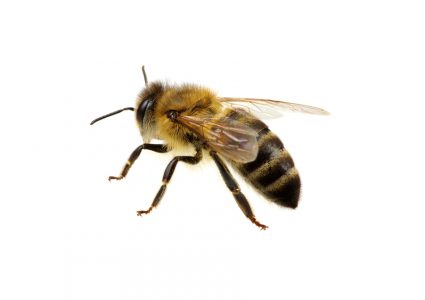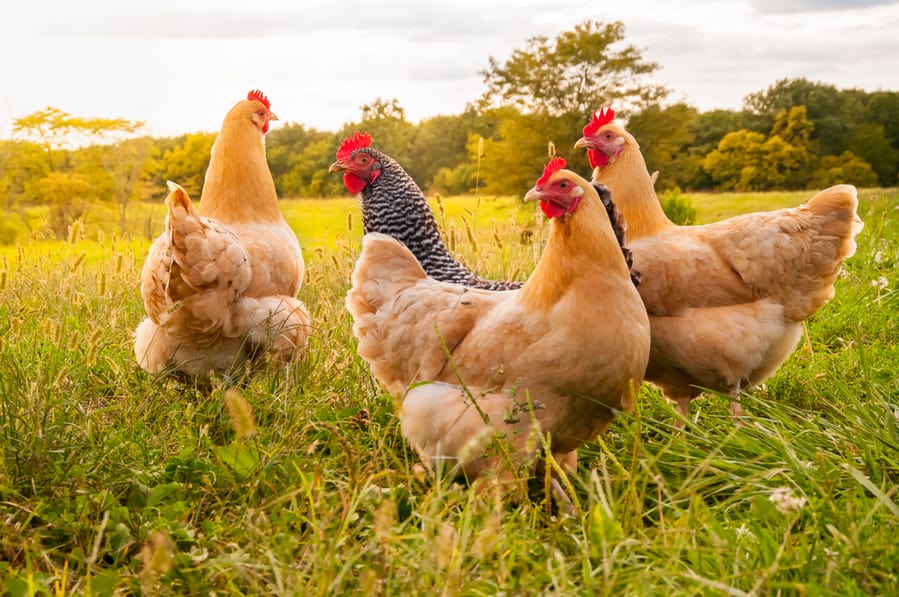
Chickens are one of nature’s masterpiece animals. They have very versatile uses.
On a lighter note, these creatures make a good alarm clock and are one of the best food sources on earth. It is no mean feat to be responsible for 45% of global food production.
Since chickens make up an essential part of our human life, it is only fair to try our best to know more about our two-legged friends.
So, in this guide, we will examine the colors they like.
Chickens have fed billions of people across different cultures and continents. They provide great food and animal protein via meat and eggs.
Another interesting fact about this two-legged creature is that they are easy to rear and manage on almost any scale.
They do not have any particular color they hate. Their preferences are determined mainly by their prior experiences and instinct.
They tend to hate colors associated with fearful incidents from predators.
That said, chickens generally love to stay around some colors like:
- Red
- Yellow
This is just a summary. Keep reading the guide to learn the reasons for the seemingly complex relationship between chickens and colors.
In the following sections, we will discuss the colors chickens hate and those they like.
Afterward, we will explain the significance of colors to their growth and productivity.
Finally, we will answer some frequently asked questions about these two-legged animals.
The Colors Chickens Hate
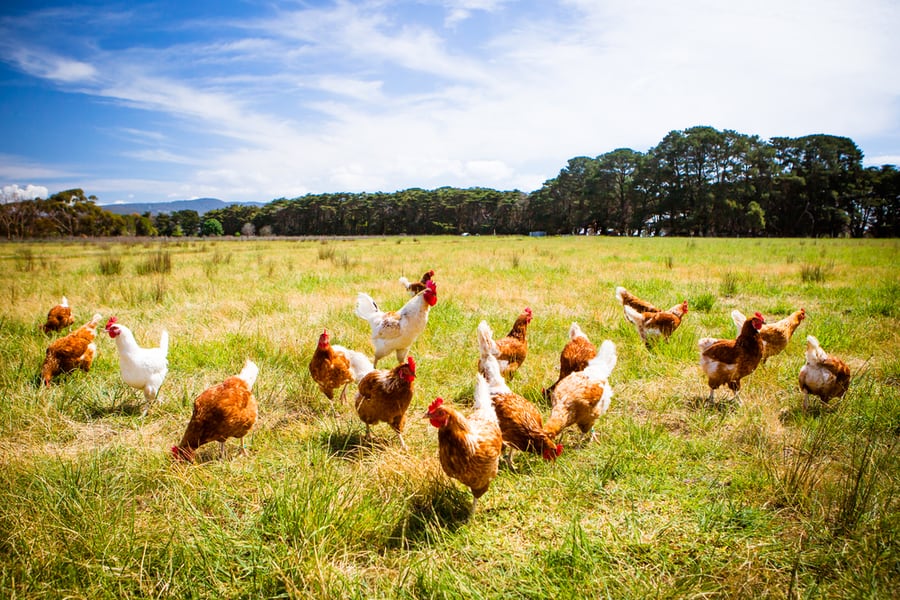
Despite being simple animals, chickens have a complicated relationship with colors. They do not hate one color or the other like spiders hate blue light. However, it is more complicated than that.
Generally, chickens hate any color they have attached a negative experience to. They are one kind of animal that is very prone to fear.
This trait is an evolutionary trait they have developed to counter predators in their environment. Chickens being flightless birds, are almost eaten by any predator in their localities.
These predators may include wild dogs, hawks, snakes, foxes, and on rare occasions, the proverbial but quite literal wolves.
The chicken’s fear trait has helped it become more sensitive to its environment, making them quickly escape the slightest threat. This is one of the reasons why fearful people are sometimes regarded as chickens.
The excellent vision of the chicken helps in the daytime to quickly identify threats when they approach and either flee (the most common response) or fight.
They also memorize the threat color and tend to avoid such threats in the future when they spot them quickly. For example, if a brown dog attacks a chicken at any time, it will hate or be fearful of the color brown.
It is interesting to note that chickens hate the dark. This observation has led some people to believe that chickens hate black.
The most plausible reason for this is that chickens have poor night vision, whereas their predators have excellent night vision. Therefore, they have evolved to be wary of the night.
Chickens can hate different colors. They hate the colors mainly due to prior personal experiences and negative experiences attached to them.
The Colors Chickens Love
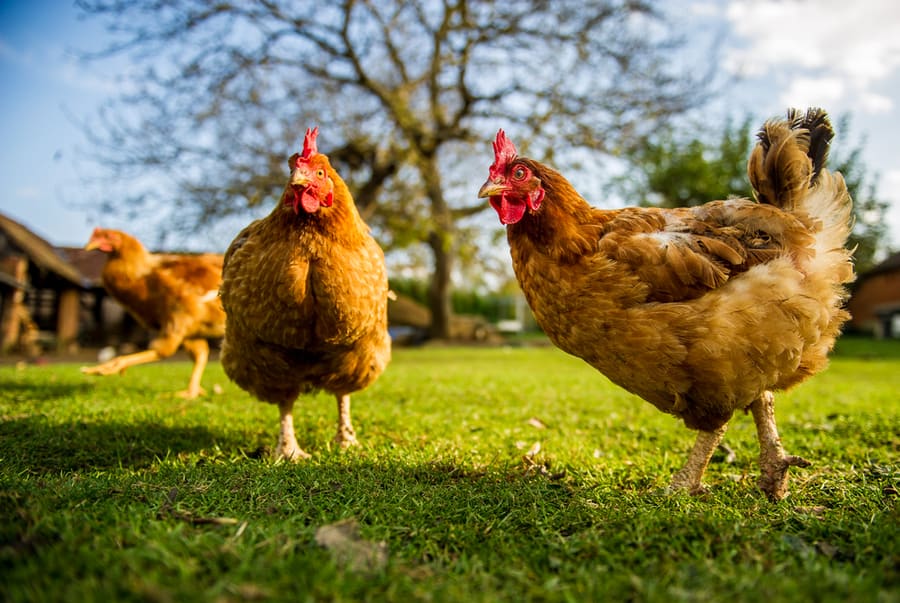
As we have established above that different chickens react differently to colors based on their prior interactions with objects on animals of that color, they, however, have natural color affinities.
Chickens love the color red, with yellow as the next loved color. This phenomenon explains why chickens can detect bright light and colors because of their eyes.
This exciting fact explains why most chicken coops and poultry houses are painted red. Chicken feeding troughs and water troughs usually have red in their designs.
It should be noted, however, that this may not apply to all chickens. If chickens experience scary or traumatic incidents at any point in their growth involving the color red, they may associate red with danger and become fearful of it.
Significance of Colors to Chickens
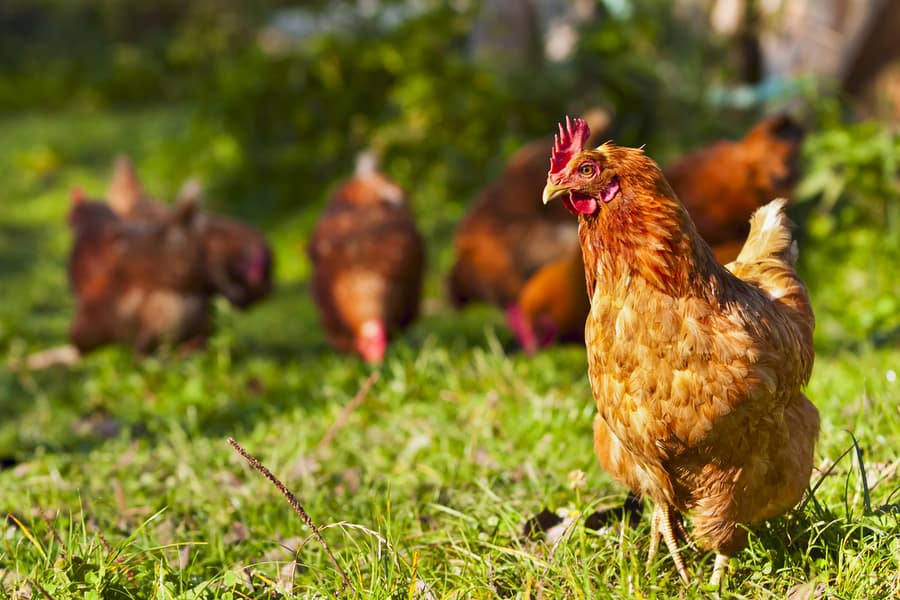
Understanding how colors affect your chickens is imperative, as this knowledge will help you design a very effective and efficient environment.
Red will always attract chickens as they can recognize it from afar. Therefore, supplies such as feeding troughs and water troughs should be painted red to attract the chickens to them.
This color preference is why wounded or bleeding chickens are separated from the rest. The sight of red blood will invite pecking from the other chickens leading to more injury and probably death.
If you want to administer drugs or inspect their coop, wearing a red hat, red boot or yellow socks will also attract them to you.
It would be best to paint coop interiors with light green or pale green in a dark, dull environment. If in a bright sunny environment, a darker shade of green or pink would do.
Red light lamps or orange light bulbs can help to stimulate reproductive maturity and egg production.
Ensure the lighting system in the coop is one that encourages sleeping as well when it is dark. Chickens need about 12 hours of daylight and about 8 hours of darkness to function well.
Blue light is known to promote growth as well as calm the chickens. You can use blue colors to catch, treat or vaccinate the chickens.
Warm light lowers their activities which also boosts egg production and hatchability. This color effect is responsible for the choice to make use of warm white light in most egg incubators.
When chickens are healthy and comfortable, their overall productivity skyrockets, and you can get a better growth projection, higher quality meat, and excellent egg production.
Conclusion
Chickens make up about 45% of global food production and are a great source of quality meat and protein across the globe.
These creatures like bright colors like red, yellow, green, and blue. They also tend to hate darker colors.
Chicken’s color preferences are not general. Their color preferences largely depend on prior experiences and instincts.
They tend to hate colors associated with fearful incidents, predators, etc.
As recommended in the guide, using the right colors with your chicken would greatly help in many ways. It can make them more productive and give a good yield.
Frequently Asked Questions
What Are Common Chicken Predators?
Chickens have several predators on the air and land. Some common predators of chickens are hawks, coyotes, foxes, raccoons, and stray dogs.
Should I Bring In My Chickens at Night?
You don’t need to bring in chickens at night. Once it is night, the chickens can find their way back to their coop. It would be best if you kept the cage open for them to find their way into it.
After the chickens are all in, you can shut the coop entrance to prevent predators from getting in.
How Long Do Chickens Live?
The life expectancy of chickens varies from breed to breed. Some species, such as the Sussex hen, will live for up to six years. Others, like the Leghorns, may live up to three years.
Can Chickens Fly?
The flight of a chicken is minimal. More giant chickens can only fly very short distances, while smaller birds can fly up to 25 ft to 30 ft scaling fences and sleeping in trees.






